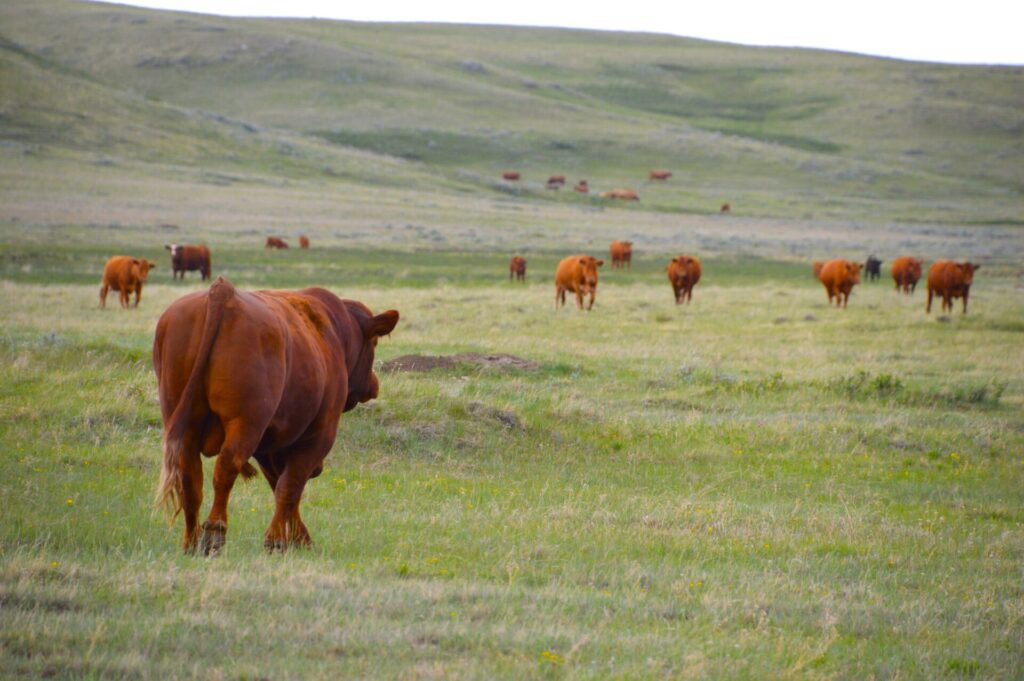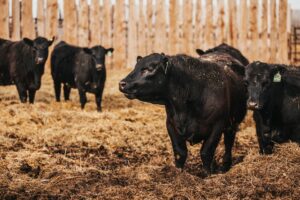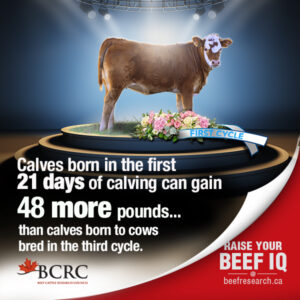It’s Basic Biology: Breeding Heifers Prior to Cows Builds Reproductive Momentum

Heifers take longer to start cycling after having their first calf than mature cows do. This means that if heifers are bred to calve at the same time as the main cow herd they are already behind coming into their second breeding season.
“It’s just basic biological math,” says Dr. John Campbell, veterinarian, and Professor in the Department of Large Animal Clinical Sciences at the Western College of Veterinary Medicine. He points out that this is why a lot of what would be second calvers drop out of the herd – they simply don’t have enough time to start cycling and rebreed.

To calve at the same time the following year, cows and heifers need to be bred about three months after a calf is born. This is easier in cows as they return to estrus 50-60 days after calving, giving them plenty of time to get bred in the first cycle after bulls are turned out. It is more challenging for heifers because they take 80-100 days to return to estrus meaning they may not have even started cycling again prior to bull turn out.
Breeding heifers prior to cows does lengthen the overall calving season, but Campbell points out that this can have advantages. Heifers are more likely to have problems calving and, with less animals calving during the same time period, producers have more time to closely monitor and deal with any potential issues. If not using a strategy like the Sandhills Calving System, having heifers calve first also reduces the disease burden on these calves. Heifers are able to calve on bedding areas when they are fresh and at their cleanest.
While some producers may not like the idea of extending the calving season, Campbell notes that if you aren’t intentional about doing it at the beginning those heifers start to fall behind and, eventually, you are either culling hard or extending the calving season at the end to wait for the stragglers to calve.
The recommendation is to breed heifers 45 days prior to cows but Campbell says that any amount of time you can give heifers as a head start is beneficial and can help towards encouraging reproductive momentum in the herd. “Front-loading” the calving season, by ensuring 65% of the breeding herd is bred and calves in the first 21 to 30 days (i.e., first cycle), results in heavier calves and a more uniform calf crop meaning an increased profit potential.
Campbell notes that all of the numbers mentioned above are for cows in an ideal body condition score of 3-3.5. If feed is short or cows are underconditioned, these times for cattle to start cycling again may be longer.
Managing heifers to calve before cows can have many advantages including giving heifers a better chance at staying in the herd for a longer time, reduced disease risk and increased profitability.
LEARN MORE
- Heifer Development (BCRC topic page)
- Maintaining Momentum During the Breeding Season (BCRC post)
- How to Increase Profitability by Improving Calving Distribution (BCRC video)
- Value of Calving Distribution Calculator (BCRC decision tool)
- Boosting the Calving Percentage in Your Beef Herd (BCRC webinar)
Sharing or reprinting BCRC posts is welcome and encouraged. Please credit the Beef Cattle Research Council, provide the website address, www.BeefResearch.ca, and let us know you have chosen to share the article by emailing us at info@beefresearch.ca.
Your questions, comments and suggestions are welcome. Contact us directly or spark a public discussion by posting your thoughts below.
